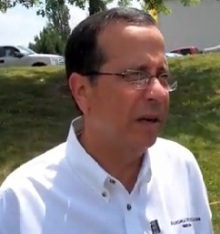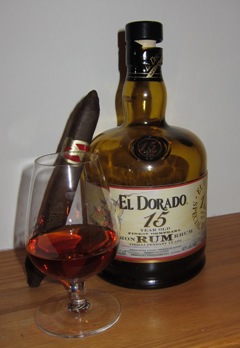News: José Blanco Joins Joya de Nicaragua
1 Sep 2011
José Blanco’s “retirement” didn’t last long. The longtime spokesman and marketing director for La Aurora announced he is joining Joya de Nicaragua as senior vice president.
 Blanco left the Dominican cigar maker in June after 29 years with La Aurora and its parent company, including the last 11 as sales director for the cigar division, which was spun off earlier this year. As sales director, Blanco was responsible for developing and releasing new cigars.
Blanco left the Dominican cigar maker in June after 29 years with La Aurora and its parent company, including the last 11 as sales director for the cigar division, which was spun off earlier this year. As sales director, Blanco was responsible for developing and releasing new cigars.
In the press release announcing the move, Blanco praised his new company. “Joining Joya de Nicaragua allows me to do what I love and feel passionate for: working with tobacco. It is a choice that I feel very happy about and makes me look into the future with great enthusiasm,” he said. “Joya De Nicaragua is in my opinion an honorable company with strong tradition and history, which I value highly.”
Dr. Martinez Cuenca, owner of Joya de Nicaragua, praised the new addition to his team: “José will bring new blood and fresh ideas to our legendary company that will allow us to expand our lines of production. His experience in blending and marketing will complement our own efforts and will undoubtedly result in a great contribution to the development and growth of Joya de Nicaragua in both the U.S. and worldwide markets.â€
Analysis
When I spoke with José Blanco at the industry trade show in July, it was pretty clear that while he was “retiring” from La Aurora, he had no intention of retiring completely from cigars. Even then it seemed clear to me that it was a question of when, not if, he would take another position in the cigar industry. Cigars, he told me, were in his blood. He also joked with me that unlike some people in the industry, he never signed a non-compete, a fact borne out by his return to the cigar industry just three months after leaving La Aurora.
In Blanco, Joya de Nicaragua gains not only a knowledgeable and innovative cigar veteran, but a gregarious spokesman. The company, which has relied on its distributor, Drew Estate, for its U.S. presence, will now have its own advocate and unique voice, even as Blanco works closely with the team at Drew Estate.
Joya de Nicaragua is also doing the cigar industry as a whole a great service as Blanco is a forceful advocate for cigar rights. Additionally, he has educated thousands of smokers with his tasting seminars that break down the elements of a cigar and give smokers a peek into the complexities of cigar blending, something that will hopefully resume with his new position.
photo credit: Stogie Guys

 “El Diario” is Spanish for “the daily,” a nod to both the daily newspaper and the fact that, at least compared to the La Palina Family Series, it’s a more affordable “daily” cigar. Currently
“El Diario” is Spanish for “the daily,” a nod to both the daily newspaper and the fact that, at least compared to the La Palina Family Series, it’s a more affordable “daily” cigar. Currently 

 The Drew Estate Undercrown also has a creation story, though despite its complexity it rings more true to me than most. As both Drew Estate co-founder Jonathan Drew and company president Steve Saka recounted to me at the recent IPCPR Trade Show, Undercrown was born on the factory floor when the rollers responsible for Liga Privada were told they could no longer smoke Ligas while they worked because Drew Estate was already struggling to meet demand. So they created their own blend using tobacco bought for Liga Privada but not specifically used in the blend.
The Drew Estate Undercrown also has a creation story, though despite its complexity it rings more true to me than most. As both Drew Estate co-founder Jonathan Drew and company president Steve Saka recounted to me at the recent IPCPR Trade Show, Undercrown was born on the factory floor when the rollers responsible for Liga Privada were told they could no longer smoke Ligas while they worked because Drew Estate was already struggling to meet demand. So they created their own blend using tobacco bought for Liga Privada but not specifically used in the blend.


 Patrick Ashby
Co-Founder & Editor in Chief
Patrick Ashby
Co-Founder & Editor in Chief Patrick Semmens
Co-Founder & Publisher
Patrick Semmens
Co-Founder & Publisher George Edmonson
Tampa Bureau Chief
George Edmonson
Tampa Bureau Chief